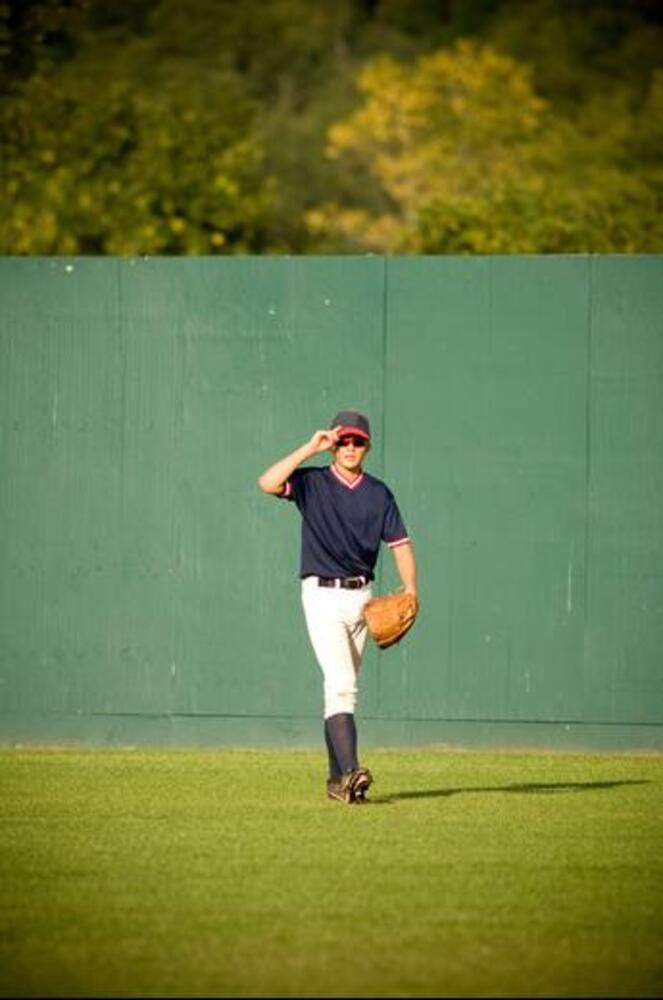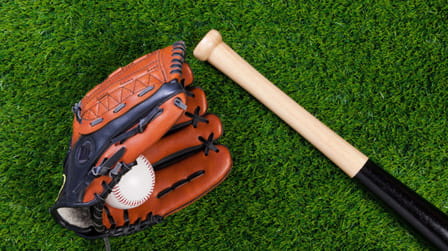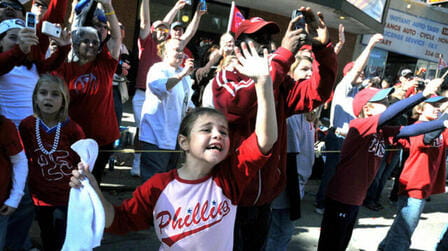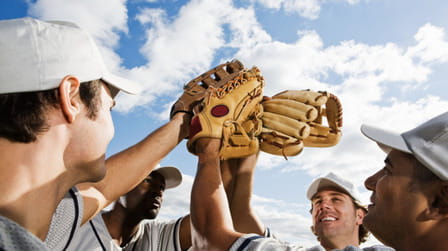Sunglasses are a popular accessory in everyday life, providing protection from the sun's bright rays. But when it comes to professional baseball, there are specific rules about what players can and cannot wear on the field. So, are players allowed to wear sunglasses while playing in Major League Baseball (MLB) games? If sunglasses are permissible for Major League Baseball players to wear during official games, there are a few key factors that come into play:
Safety Regulations

Non-Reflective Lenses
The lenses of sunglasses worn during MLB games cannot be reflective or mirrored. Reflective surfaces could shine sun into the eyes of other players, causing distraction or visibility difficulties. Typically dark gray, brown or green tinted lenses are permitted. Bright colors, neon tones or reflective coatings would all likely not be allowed.
Unobstructed Field of Vision
The frames and lenses of players' sunglasses must not be overly large or wrap around in a way that blocks a player's peripheral vision. Umpires need to ensure players can clearly see the full field of play, and may require removal if sunglasses are deemed to obstruct sight lines.
Minimal Branding/No Advertisements

Uniform Appearance Standards
Sunglasses need to align with MLB's overall uniform rules and appearance guidelines. Frames cannot be bright colors or crazy shapes that would detract from team uniform consistency. Essentially, sunglasses should blend in, avoiding loud styles.
By adhering to these kinds of regulations, players can enjoy the benefits of sunglasses without compromising competitive fairness or safety. Moderation and a focus on performance are key when equipping sunglasses for MLB games.
Examples of Acceptable Sunglasses in Major League Baseball
To give a better visual idea of what types of sunglasses are allowed in Major League Baseball games, here are some examples of glasses that meet regulations:
Oakley Holbrook Glasses - A classic, wraparound frame style with brown, gray or green non-reflective lens options. Secure fit with no loose parts. Subtle Oakley logo branding.
Maui Jim Red Sands Sunglasses - Feature gray polarized lenses to reduce glare. Flexible TR-90 frame material. Minimal logo decoration. Vintage inspired style.
Nike Show X2 Pro Sunglasses - Sporty wrap frame maximizes coverage without obstructing vision. Gray tinted lenses. Rubber nose pads and tips increase grip and comfort. Swoosh logo along temples.
Rawlings Sport Sunglasses - Made specifically for sports performance with scratch and impact resistance. Fixed lenses in dark gray shade. Contoured temple arms prevent slipping. Rawlings name etched on lenses.
Under Armour Igniter Sunglasses - Wrap shape with cushioned nose bridge reduces slippage. Grilamid TR-90 frame material is durable. Solid gray lenses offer 15% VLT (visible light transmission).
These styles adhere to MLB regulations, promoting performance and protection without flashy designs. When selecting sunglasses, players should opt for practical styles that align with on-field standards.
Key Benefits Sunglasses Provide MLB Players
Wearing sunglasses during MLB games when playing under bright skies offers players several advantages:
- Enhanced Visual Focus - Tinted lenses filter excess glare allowing players to better track and focus visually on the ball in play. This can lead to improved batting, fielding and catching.
- Reduced Eye Fatigue - Squinting to see on sunny days can tire eyes and cause visual strain. Sunglasses alleviate glare and let players see comfortably without squinting.
- Protection from UV Rays - Harmful UVA and UVB rays from the sun can contribute to eye problems like cataracts over time. Sunglasses shield eyes and prevent long term damage.
- Improved Contrast - Sunglass lenses enhance contrast allowing players to better distinguish the white ball against bright skies or cloud cover. Key for tracking ball movement.
- Minimized Distractions - Reflections off stands, scoreboards and bleachers can be distracting. Sunglasses cut down on reflecting light sources so players can fully focus.
- Decreased Missed Plays - By improving vision and focus, sunglasses can help minimize errors on high speed balls that may otherwise be lost in sun glare and cause missed outs or plays.
While style plays a small role, the main motives for MLB players wearing sunglasses are practical and performance driven. Sunglasses are a useful tool for optimizing play under the bright lights of pro baseball.
Why MLB Players May Opt Not to Wear Sunglasses
Despite the visual perks sunglasses offer on sunny game days, there are also some reasons why a Major League Baseball player may choose not to wear sunglasses while playing:
- Night games - For evening games under stadium lights, sunglasses don't offer much benefit and may make visibility worse in low light. Players often ditch shades for night games.
- Pitcher preference - Some pitchers avoid sunglasses because they prefer direct eye contact with catchers/batters without tinted lenses obstructing their view and facial readings.
- Game time decision - Sun glare on a given day may not warrant sunglasses or cloud cover may reduce sun exposure. Players make game time calls based on conditions.
- Product testing - MLB players are often testing out new gear and equipment. An uncomfortable, unsecure new sunglass style may get sidelined until design kinks are fixed.
- Visual acclimation - Players used to playing without sunglasses may decide against adopting them mid-season to avoid impacting familiar visual cues.
- Reduce helmet fogging - Some players experience sunglasses contributing to more helmet fogging which negatively impacts visibility for at bats.
- No perceived advantage - If a player's vision is already adapted to high glare, they may gain little boost from sunglasses on very bright days.
While most MLB players don the shades, personal preference, lighting conditions, and other factors all contribute to some pros electing to play sans sunglasses on any given game day.
Case Studies of MLB Players Leveraging Sunglasses
To see sunglasses in action, let's look at how two prolific Major League Baseball players have utilized sunglasses to enhance their game day performance and comfort:
Bryce Harper
All-star slugger Bryce Harper always wears sunglasses at the plate and in the outfield. His preferred frames are custom Oakley Holbrook styles featuring Prizm lenses developed to improve contrast in sports environments. Harper credits the sunglasses with allowing him to better pick up spin on balls off the bat and visually track balls hit into the air. He never steps on the field without his signature shades.
Mookie Betts
Boston Red Sox star Mookie Betts dons contact lenses when batting but switches to Nike sunglasses when playing right field. The sunglasses allow Betts to better see balls against the Fenway Park's brightly lit scoreboard. Betts says his Nike shades cut down on pesky reflections and glare that could cause him to lose balls in flight. For Betts, sunglasses are a defensive assist.
These elite players demonstrate how maximizing visibility with sunglasses provides on-field advantages that assist both hitters and fielders alike. Their strategic use of sunglasses shows why MLB permits and how pros leverage these visual aids.
Key Takeaways on Sunglasses in Major League Baseball
In summary, here are the key facts to know regarding sunglass regulations and usage in professional MLB games:
- Sunglasses are permitted during MLB games to help players handle sun glare.
- Safety and fair play are the priorities governing sunglass rules.
- Mirrored or reflective lenses are prohibited, while dark tinted lenses are allowed.
- No detachable parts and minimal branding/advertising on frames.
- Lenses and frames cannot obstruct players' fields of vision.
- Umpires make final decisions on removing unsafe or distracting eyewear.
- Strategic use of sunglasses can provide gameplay advantages by optimizing visibility.
So while style plays a small role, performance and safety are the driving factors that allow Major League Baseball players to don sunglasses for competitive edge and eye protection.
Top 5 Frequently Asked Questions about Sunglasses in MLB
Here are answers to 5 of the most frequently asked questions about Major League Baseball's regulations regarding sunglasses:
Q: Are any lens colors like blue or orange allowed?
A: No, only gray, brown, or green tinted lenses are permitted that don't alter color perception needed to track the ball.
Q: Can players wear sunglasses while batting?
A: Yes, players can wear sunglasses at the plate to reduce glare and improve ball tracking.
Q: Do players need a doctor's note to wear sunglasses?
A: No physician approval is required. Players can freely choose to wear sunglasses as desired.
Q: Do bigger sunglasses provide a competitive advantage?
A: Not significantly, as the lenses and frames cannot be so large that they obstruct vision which would break MLB rules.
Q: Do players ever get fined for wearing banned sunglasses?
A: In practice, umpires request players remove any disallowed eyewear rather than issuing fines for violations.
Safety and fair play are always the priorities around sunglass regulations in the MLB. As long as those principles are upheld, players have free reign to equip shades as needed for optimum visual performance.
Conclusion
In the major leagues, sunglasses are considered an acceptable visual aid and are permitted during official games. The rules do impose some standards around frame style, lens type, branding and field of vision obstruction to ensure safety and competitive fairness is maintained. Many players take advantage of quality sunglasses for their glare reduction, UV protection, and enhanced focus benefits that together can provide on-field performance advantages. Strategic sunglass use allows pros to better see the ball and visually track critical game actions. While some players still prefer going sans shades, for many MLB stars, donning a pair of approved sunglasses is a bright idea under the sun.












